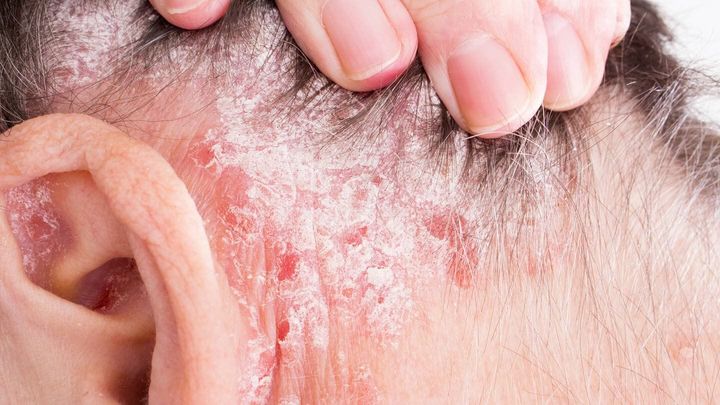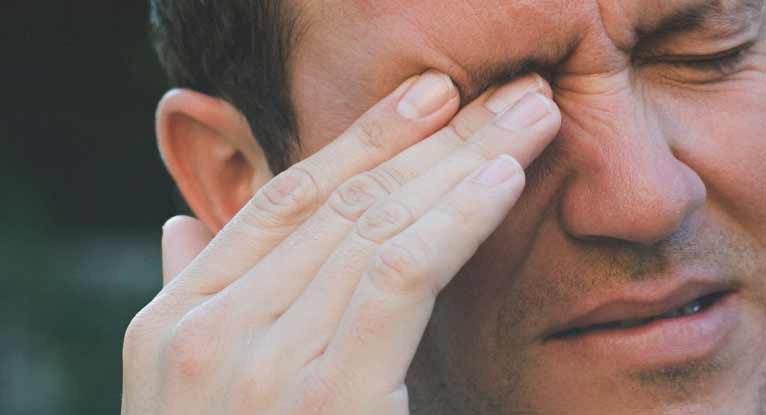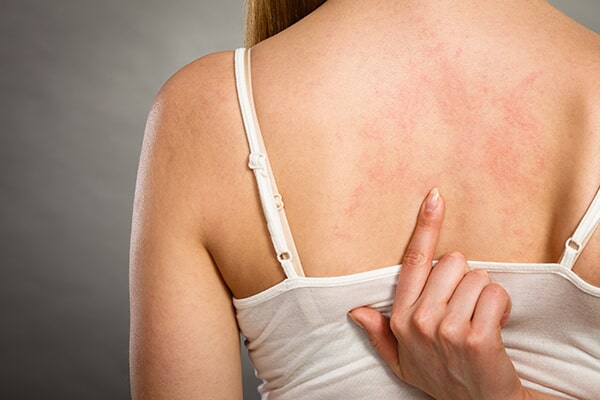Shingles is an infection caused by the same virus as chickenpox.
About 33 percent of the population will develop shingles sometime during their life. According to the Mayo Clinic, the infection is most common in people over the age of 50, but younger people are also at risk.
According to the National Center for Biotechnology Information (NCBI), shingles most commonly appears on the torso or chest.
However, it can occur anywhere on your body, including:
- your face
- arms
- bottom
- scalp
Keep reading to learn more about shingles on the scalp, including:
- how to treat it
- why it occurs
- how to prevent it
The symptoms of shingles
When you have chickenpox, the virus that caused the condition remains dormant in your nerve tissue long after chickenpox has passed. If the virus is triggered (reactivated), you can develop shingles.
Similar to chickenpox, shingles appears on the body appears as little blisters. The rash is followed by a dry crust forming on the skin that can take several days to weeks to heal.
The initial symptoms of shingles can be painful, and include:
- burning
- sharp pain
- tingling
- numbness in skin
- severe itching or aching
- fatigue
- fever
Approximately 1 to 14 days after you start feeling pain, you’ll notice a rash of blisters and reddened skin.
When shingles develops on the scalp or head, symptoms can include:
- headache
- weakness of one side of the face if the rash occurs around the ears
According to The National Institute on Aging, most cases of shingles last anywhere from 3 to 5 weeks.
Treating shingles on the scalp
It’s best to start treating shingles with prescription antiviral medications when symptoms first appear.
Shingle blisters on the scalp can cause sensitivity when combing or brushing your hair.
Be careful that your brush bristles don’t scrape a rash or burst a blister. If the scalp is scratched too hard, scars can cause a rash that destroys the cells required to grow new hair follicles.
If the infection isn’t treated properly and timely, it can lead to permanent challenges such as bald patches. If one or both eyes are involved, it can lead to blindness.
Medications
To treat your shingles, your doctor may recommend:
- prescription antiviral drugs such as acyclovir (Zovirax)
- pain medication
- corticosteroids in certain cases
Other recommendations to help relieve pain might include:
- nerve blocks in some cases
- topical lidocaine patches
- over-the-counter pain relievers such as acetaminophen (Tylenol) or acetylsalicylic acid (Aspirin)
Self-care techniques
Self-care remedies might also help relieve the discomfort of shingles on your scalp. Try:
- resting cool, damp towels on the rash
- avoiding hats, caps, and bed linens (pillowcases) made of materials that attach to the rash
- using lukewarm water to shower
Is shingles contagious?
Shingles is only contagious to people who’ve never had chickenpox, and it requires close contact with the blisters caused by shingles. Once the blisters crust over, they aren’t contagious anymore.
Who’s at risk of getting shingles?
Anyone who’s had chickenpox is at risk of developing shingles. A weakened immune system allows the original chickenpox virus to reactivate as shingles.
Reactivation of the virus may be caused by:
- aging
- immune-suppressing medications
- major surgery
- complication of cancer or AIDS treatment
- injured or sunburned skin
- emotional stress
According to the CDC, over 99 percent of Americans ages 40 and older have had the chickenpox during their lifetime.
Can you prevent shingles?
If you’ve never had chickenpox, a shingles vaccine is available.
The U.S. Food and Drug Administration (FDA) approved the vaccine Shingrix in 2017 to treat shingles and to replace the previous vaccine, Zostavax.
The CDC recommends that healthy adults ages 50 and older get the Shingrix shingles vaccine. Talk to your healthcare provider about when you should get the vaccine.
The takeaway
Shingles can appear anywhere on your body, including the scalp. It’s important to see a healthcare provider when you first notice symptoms.
Although they can be uncomfortable, the rashes and blisters associated with shingles can be treated by taking the appropriate steps your healthcare provider recommends.
The shingles shouldn’t last longer than about 5 weeks.





